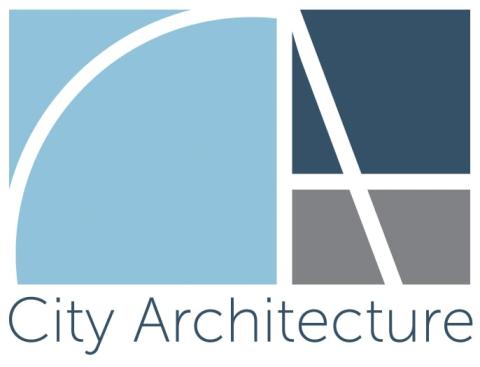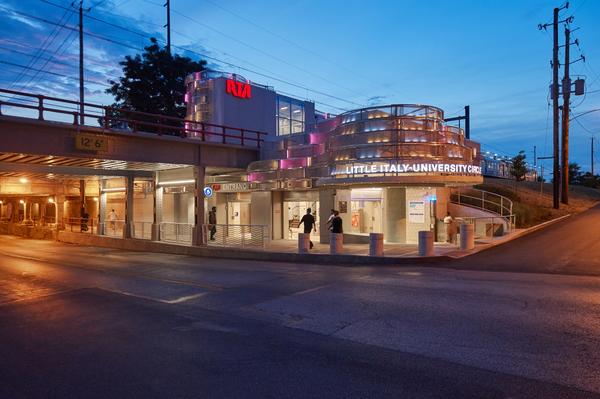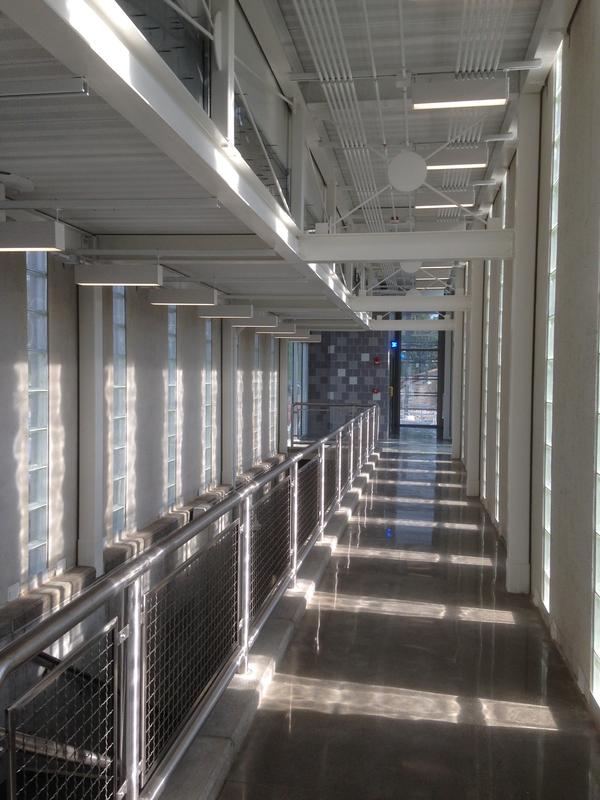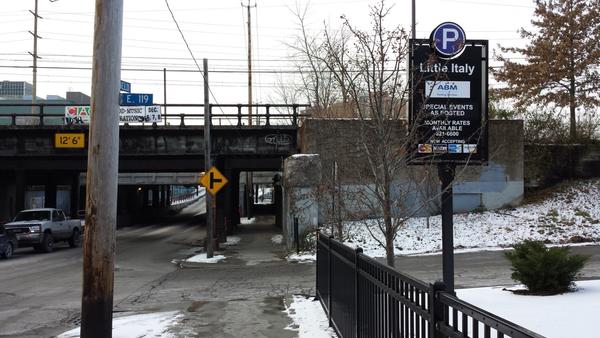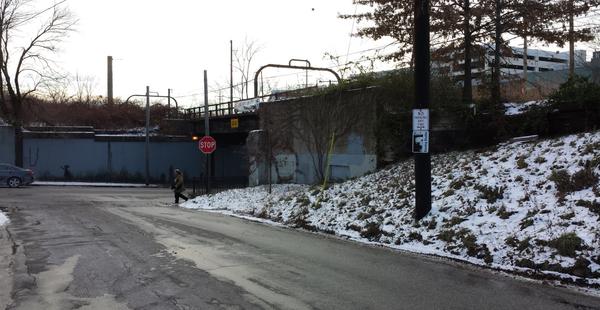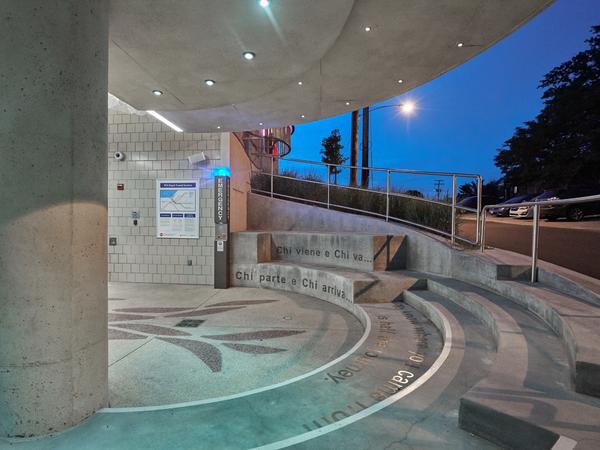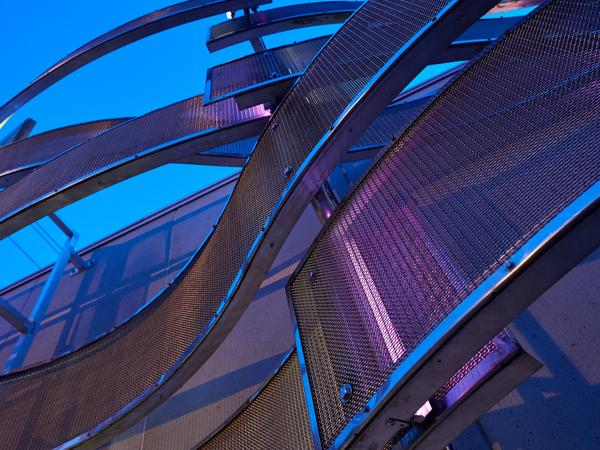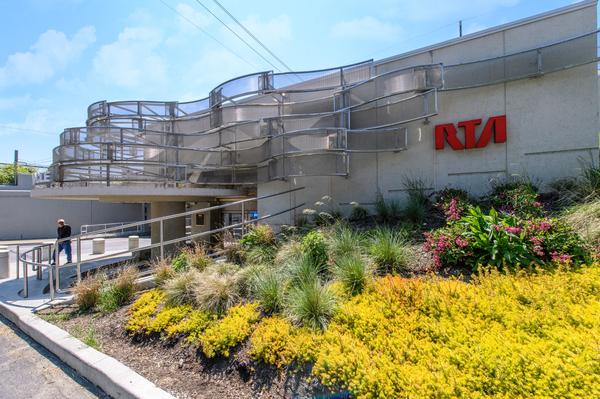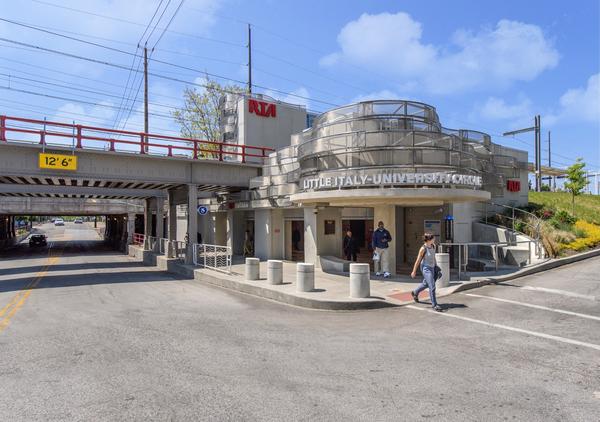About this Project
CLEVELAND -- The Greater Cleveland Regional Transit Authority (RTA) operates a Red Line rail station on Euclid Avenue at East 120th Street. That functionally obsolete station will be moved several blocks south, to Mayfield Road at East 119th Street.
Because the new station will be close to the vibrant neighborhood of Little Italy, it will be called the Little Italy - University Circle Rapid Station. Informally, it is sometimes referred to as the Mayfield Road Station, or the Little Italy Station.
The move comes as the result of a 2008 study to develop a transit-oriented development (TOD) plan for the station. Download a copy of the master plan here.
Total project cost: $16.5 million
Construction
On Sept. 17, 2013, the RTA Board passed resolution 2013-89, and awarded a contract for $11.11 million to McTech Corp. Federal funds from an $8.9 million TIGER III grant will cover 80 percent of the costs. The design includes:
- A single platform headhouse and entrance plaza complying with current ADA requirements.
- A heavy-duty elevator and stairway from the street level up to the platform and waiting areas.
- New concrete sidewalks, landscaping, lighting and bridge abutment repairs
An existing private steel railroad bridge will be demolished.
About 22 percent of the work, or $2.5 million, will be shared by seven Disadvantaged Business Enterprises (DBEs).
A look to the future
In May 2011, The Plain Dealer's Steve Litt wrote:
The project aims to mesh with a burst of development along Euclid Avenue, including the residential-retail Uptown project; the proposed, new home of the Museum of Contemporary Art; and the consolidation of the Cleveland Institute of Art into the Joseph McCullough Center for the Visual Arts. When completed, the station should be a strong example of what planners call transit-oriented development, in which rail stations complement residential, retail and institutional growth in neighborhoods.
To help fund the design effort, RTA worked with the Cleveland Foundation, the Northeast Ohio Areawide Coordinating Agency (NOACA), Little Italy, University Hospitals, the Cleveland Clinic and Case Western Reserve University.
Proposed development in the surrounding area includes:
- Two buildings (one five-story, one seven-story) featuring first-floor retail and nine floors of apartments.
- Retail use of approximately 24,000 square feet for convenience-oriented uses, such as a small grocer, dry cleaner and restaurants.
- Apartments in Building One (four floors, 48 units) designated for temporary corporate (institutional) housing. CWRU, University Hospitals, the Cleveland Clinic or other institutions and businesses could lease an entire floor or two.
- Each floor would contain 12 units, averaging 1,000 square feet per unit.
- Apartments in Building Two (five floors, 72 units) would be designated for market-rate apartments, with the future opportunity for these to convert to condo.
The institutions would be able to offer their visiting professionals a place to stay on a short-term basis at the designated corporate housing area. A separate key card to create exclusivity would access these floors.
The medical resident group and their families would look to this project as a place to rent for their 3 +/- year stint in Cleveland, rather than searching for housing in other areas.
The first floor would feature convenience-oriented retail for the residents, as well as the 30,000+ employees of University Circle parking nearby or walking by.
The building should offer services to distinguish it from other buildings and service the residents, such as a concierge for dry cleaning, car wash, theater tickets and dinner reservations. Incentives would be limited to new markets tax credits and tax abatement.
Progress and Milestones
-
July 22 - September 5, 2013Advertise for Bidscompleted
-
August 2013Final land purchasedcompleted
-
Contract Awardcompleted
-
Groundbreakingcompleted
-
24 monthsConstruction periodcompleted
-
Openedcompleted
Team and Partners
